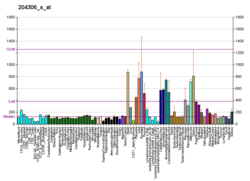| CD151 | |||||||||||||||||||||||||||||||||||||||||||||||||||
|---|---|---|---|---|---|---|---|---|---|---|---|---|---|---|---|---|---|---|---|---|---|---|---|---|---|---|---|---|---|---|---|---|---|---|---|---|---|---|---|---|---|---|---|---|---|---|---|---|---|---|---|
| Identifiers | |||||||||||||||||||||||||||||||||||||||||||||||||||
| Aliases | CD151 , GP27, MER2, PETA-3, RAPH, SFA1, TSPAN24, CD151 molecule (Raph blood group), EBS7 | ||||||||||||||||||||||||||||||||||||||||||||||||||
| External IDs | OMIM: 602243; MGI: 1096360; HomoloGene: 20916; GeneCards: CD151; OMA:CD151 - orthologs | ||||||||||||||||||||||||||||||||||||||||||||||||||
| |||||||||||||||||||||||||||||||||||||||||||||||||||
| |||||||||||||||||||||||||||||||||||||||||||||||||||
| |||||||||||||||||||||||||||||||||||||||||||||||||||
| |||||||||||||||||||||||||||||||||||||||||||||||||||
| |||||||||||||||||||||||||||||||||||||||||||||||||||
| Wikidata | |||||||||||||||||||||||||||||||||||||||||||||||||||
| |||||||||||||||||||||||||||||||||||||||||||||||||||
CD151 molecule (Raph blood group), also known as CD151 (Cluster of Differentiation 151), is a human gene. [5]





